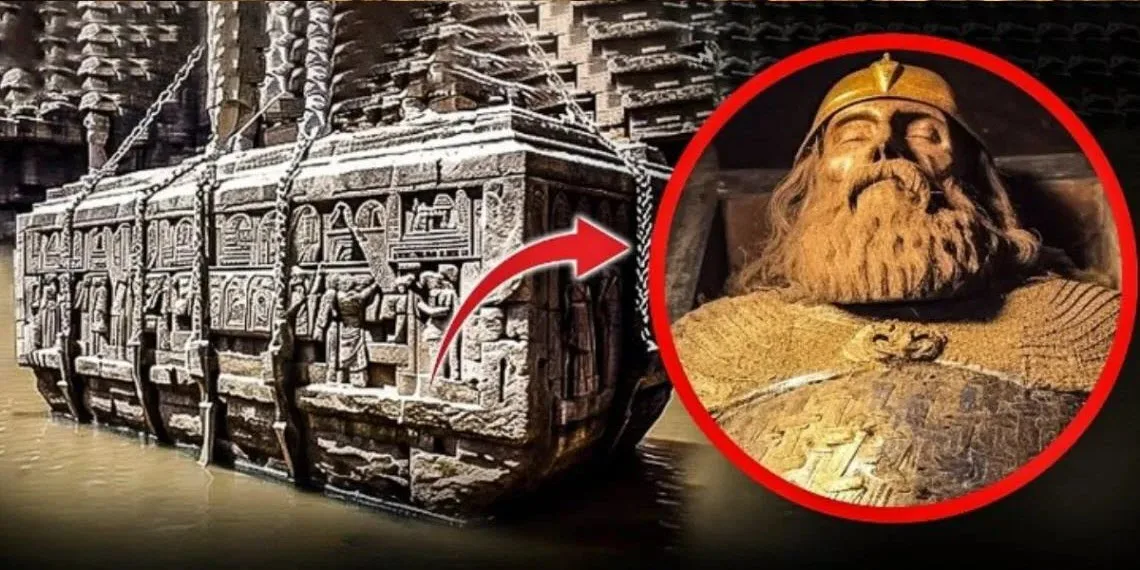In recent weeks, sensational headlines have taken the internet by storm: “Epic Temple of Giant Gilgamesh Found Under the Euphrates River!” Could it be true? Is this the historical breakthrough archaeologists have been waiting for, or merely another round of internet speculation? Let’s dive into the mystery and explore the facts.

The Legend of Gilgamesh
Gilgamesh is one of the most iconic figures of ancient Mesopotamian mythology and history. As the central character in the “Epic of Gilgamesh”—one of the oldest known pieces of literature—he is depicted as a demigod with unmatched strength and wisdom. Historically, Gilgamesh was believed to be a Sumerian king who ruled the city of Uruk around 2800 to 2500 BC.
According to ancient texts, Gilgamesh was buried under the Euphrates River after its waters were temporarily diverted, ensuring that his tomb would be untouched by time or intruders. For centuries, this account remained part of ancient lore, fascinating historians, archaeologists, and conspiracy theorists alike.
Unearthing the Myth: Recent Claims
Recently, a wave of reports and videos has emerged, suggesting that the Euphrates River has dried up, revealing the Temple of Gilgamesh or even his intact, giant body. These claims have sparked excitement and intrigue across social media platforms, with many speculating about the historical and religious significance of such a discovery.
But how much truth is behind these reports?
Historical Context: A Grain of Truth?
Back in 2003, a team of German archaeologists claimed to have found the ancient city of Uruk, which was believed to have been ruled by Gilgamesh. They discovered structures that matched descriptions from the “Epic of Gilgamesh,” including garden layouts and architectural designs.
One particularly fascinating find was a building located in the dried-up riverbed of the Euphrates, which the team suggested could be a burial site. This discovery fueled speculation about the possible location of Gilgamesh’s tomb, but no definitive evidence was found to confirm it.
Separating Fact from Fiction
While the idea of discovering the Temple of Gilgamesh is thrilling, it’s important to approach these claims with caution. Many of the recent reports lack credible archaeological evidence and are often based on sensationalized narratives.
Experts caution against accepting these stories at face value, emphasizing the need for scientific validation and peer-reviewed research. Until reputable archaeological teams verify these claims, they should be taken as modern myths inspired by ancient legends.
Why Are People Fascinated by This?
The story of Gilgamesh resonates with people across the world because it touches on universal themes of heroism, immortality, and the quest for meaning. The possibility of discovering his temple or tomb ignites our imagination, bridging the gap between myth and history.
Furthermore, the notion of finding the resting place of a giant ruler ties into numerous religious and cultural narratives, fueling speculation and curiosity.
Final Thoughts: Legend or Reality?
So, is the Temple of Giant Gilgamesh really hidden beneath the Euphrates River? For now, the answer remains uncertain. While historical texts and archaeological findings suggest there could be some truth to the legend, no concrete evidence has been presented to confirm the discovery.
As technology and exploration methods advance, perhaps the mystery of Gilgamesh’s final resting place will eventually be unveiled. Until then, the legend continues to captivate and inspire.
Stay Updated!
Curious about more archaeological mysteries and ancient legends? Subscribe to our blog and stay tuned for the latest updates on historical discoveries and unsolved enigmas from around the world!

